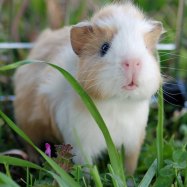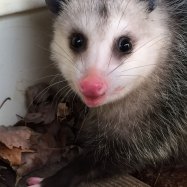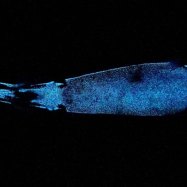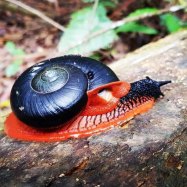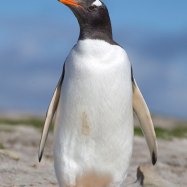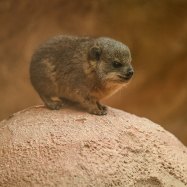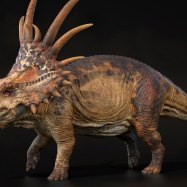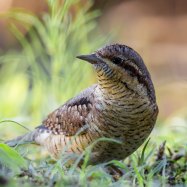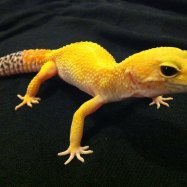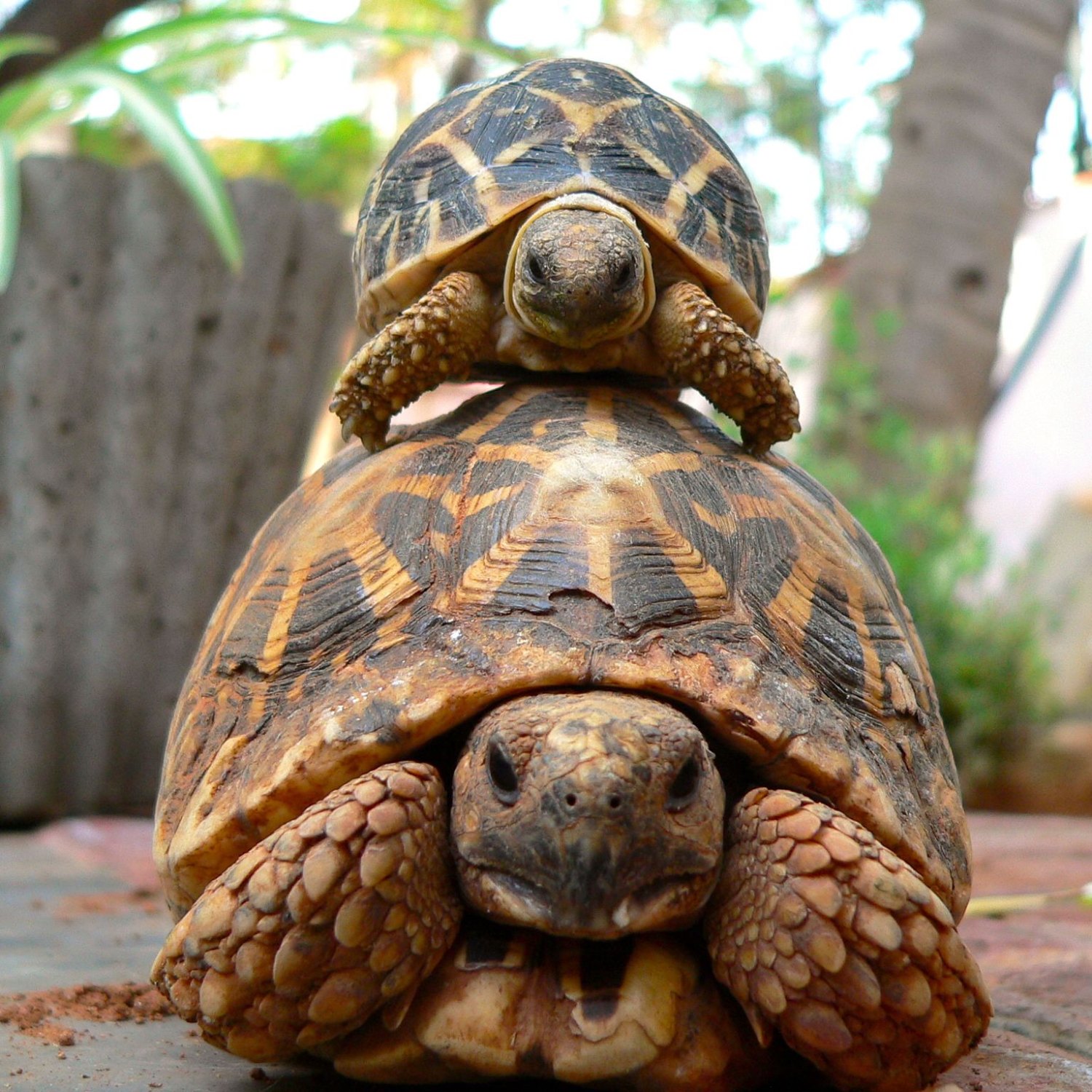
Tortoise
Ranges from a few inches to several feet
Did you know that tortoises, with their dome-shaped shell and sturdy built, can range from a few inches to several feet in length? These fascinating creatures can be found in Africa, America, Asia, and Europe, making them a familiar sight all over the world. So next time you spot a tortoise, say hello to your friendly Testudinidae neighbor! #tortoise #animals #wildlife
Animal Details Summary:
Common Name: Tortoise
Kingdom: Animalia
Habitat: Grasslands, forests, deserts
The Amazing World of Tortoises
Tortoises are one of the most fascinating creatures on our planet, with a long history and impressive adaptability. Scientifically known as Testudinidae, these animals belong to the kingdom Animalia and phylum Chordata. They are often referred to as "tortoises" or "turtles," but it is important to note that they are not the same creature. Tortoises are land animals, while turtles are aquatic Tortoise. In this article, we will discover the incredible features and facts about these unique creatures.A Marvel of Reptilian Evolution
Tortoises are classified under the class Reptilia and order Testudines, and are the only surviving members of the family Testudinidae. They have been around for millions of years, with fossils dating back to the era of dinosaurs. They have evolved over time to become one of the most resilient and adaptable creatures on Earth. One of the reasons for their success is their unique body structure and armor-like shell.The Dome-Shaped Shell of Tortoises
The most recognizable feature of a tortoise is its hard bony shell, also known as a carapace. This shell is made up of fused bones and is essential in providing protection against predators. The shell also helps them regulate their body temperature by allowing them to warm up in the sun and cool off in the shade. The dome-shaped shell can also serve as camouflage, blending in with their surroundings in the wild Turnspit.Sturdy Built and Body Size
Tortoises have a sturdy built, with strong and sturdy limbs that allow them to carry their heavy shell. Their size can range from a few inches to several feet, depending on the species. The largest species of tortoise is the Galapagos tortoise, which can weigh up to 880 pounds and have a shell length of up to 5 feet. On the other end of the spectrum, the smallest species, the speckled cape tortoise, can fit comfortably in the palm of your hand.Herbivorous Diet and Habitat
As tortoises are land animals, they require a specific habitat and feeding method to survive. They are primarily herbivores, consuming mostly plants and grasses. They are found in a variety of habitats, including grasslands, forests, and deserts. They are commonly found in temperate and tropical regions worldwide, making them a diverse and adaptable species.Distribution and Country of Origin
Tortoises are spread out across the globe, with different species found in Africa, America, Asia, and Europe. The specific countries of origin for different species can vary, with some species only found in a single country and others found in several. For example, the radiated tortoise is endemic to Madagascar, while the red-footed tortoise can be found in countries across South America.Distinct Coloration of Tortoises
Tortoises have a range of colors, depending on the species. They can be brown, black, tan, or yellow, and have distinct markings and patterns on their shells. These colors and patterns serve as a form of camouflage in the wild, helping them blend in with their surroundings and stay hidden from predators.The Life of a Tortoise: Behavior and Habits
Despite their appearance, tortoises are surprisingly active and social animals. They have specific behaviors and habits that have developed over years of evolution.Slow and Steady
One of the most well-known traits of tortoises is their slow movement. These animals have a top speed of only 0.17 miles per hour, making them one of the slowest land creatures. However, this slow pace is not a disadvantage. In fact, it contributes to their long lifespan, with some species living up to 100 years.Reclusive and Solitary
Tortoises are naturally solitary animals, preferring to spend most of their time alone. They are non-aggressive and will only interact with other tortoises during mating season. They are also primarily active during the day, spending their nights sleeping underground or in their shells.Nomadic Lifestyle
As tortoises require a large area to find enough food, they have a nomadic lifestyle. They can travel long distances in search of food, moving from one location to another. This lifestyle has helped them survive and adapt to various environments over the years.Unique Communication
Tortoises may not have vocal cords, but they are not entirely silent creatures. They communicate through a range of hisses, grunts, and even a high-pitched whining sound when in distress. They also use body language to communicate with other tortoises, such as stretching their necks out to show dominance or pulling it in to show submission.Conservation and Threats to Tortoises
Despite their remarkable adaptability and resilience, tortoises are still facing numerous threats that put them at risk.Habitat Destruction
As humans continue to expand and develop, the natural habitats of tortoises are being destroyed. This leads to the displacement of tortoises and reduces their access to food and water sources. Deforestation and urbanization are significant contributing factors to the destruction of their habitats.Predators
Tortoises have natural predators, including birds, snakes, and mammals. Due to their slow pace, they are vulnerable to these predators, especially when they are young. The decline of natural habitats also contributes to an increase in predators, as they may seek out other food sources.Illegal Trade and Poaching
Tortoises are often captured and illegally traded for their unique shells or as exotic pets. Poaching also poses a significant threat to their survival, as some species are considered delicacies in certain cultures. This illegal trade has led to a decline in some tortoise species, with some even facing the risk of extinction.The Importance of Protecting Tortoises
Tortoises play an important role in their ecosystems, and their disappearance would have a ripple effect on the environment. As herbivores, they help control plant growth, and their burrowing activities can contribute to soil aeration. They also serve as a food source for predators and help maintain the balance of the food chain.In Conclusion
The world of tortoises is as varied and diverse as the habitats they live in. From their unique body structures to their fascinating behaviors, these animals continue to captivate us with their ability to adapt and thrive in various environments. However, they are also facing threats that endanger their survival. It is essential to raise awareness and take action to protect these gentle creatures and ensure that they continue to thrive in our world.

Tortoise
Animal Details Tortoise - Scientific Name: Testudinidae
- Category: Animals T
- Scientific Name: Testudinidae
- Common Name: Tortoise
- Kingdom: Animalia
- Phylum: Chordata
- Class: Reptilia
- Order: Testudines
- Family: Testudinidae
- Habitat: Grasslands, forests, deserts
- Feeding Method: Herbivorous
- Geographical Distribution: Mostly in temperate and tropical regions
- Country of Origin: Various countries
- Location: Found in Africa, America, Asia, Europe
- Animal Coloration: Varies depending on the species, can be brown, black, tan, or yellow
- Body Shape: Dome-shaped shell, sturdy built
- Length: Ranges from a few inches to several feet
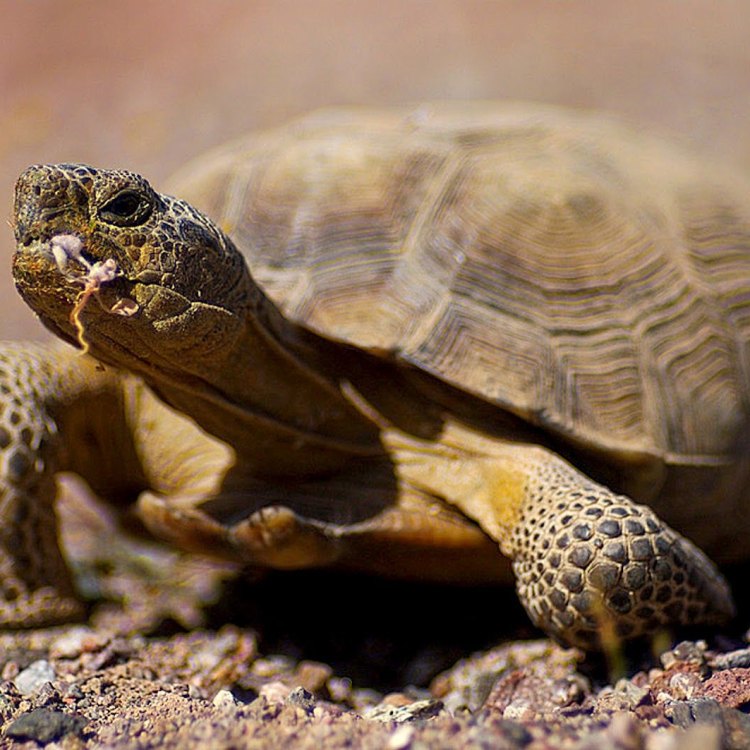
Tortoise
- Adult Size: Varies depending on the species, can range from a few inches to over 4 feet
- Average Lifespan: Varies depending on the species, can live for over 100 years
- Reproduction: Sexual reproduction
- Reproductive Behavior: Mating usually occurs in spring or summer
- Sound or Call: Tortoises are generally not vocal, but some species may make hissing or grunting sounds
- Migration Pattern: Some tortoises have seasonal movements, but not true migrations
- Social Groups: Most tortoises are solitary animals, except during the breeding season
- Behavior: Tortoises are slow-moving and spend most of their time on land
- Threats: Habitat loss, illegal pet trade, predation
- Conservation Status: Varies depending on the species, some are endangered or critically endangered
- Impact on Ecosystem: Tortoises play a role in seed dispersal and vegetation control in their habitats
- Human Use: Tortoises are sometimes kept as pets, and their shells and meat have been used in various cultures
- Distinctive Features: Shell, long lifespan, slow movement
- Interesting Facts: Tortoises are known for their long lifespans, some species can live for over a century
- Predator: Predators of tortoises include larger carnivores, birds of prey, and humans
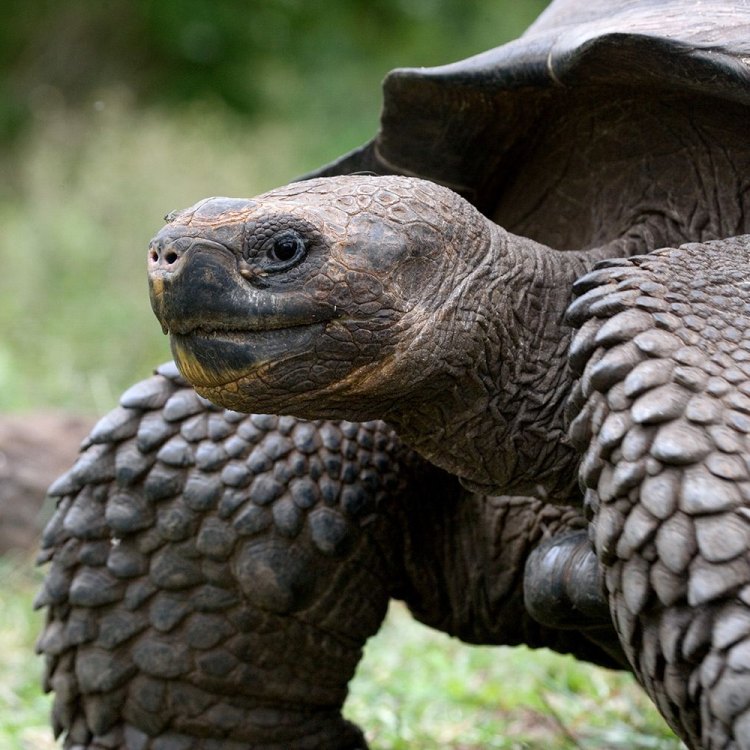
Testudinidae
The Enigmatic Tortoise: A Closer Look at These Slow-Moving Wonders
Nature is full of incredible creatures, and one that often captures our fascination is the tortoise. These slow-moving reptiles have been around for millions of years and have adapted to survive in a variety of habitats. From their distinctive shell to their remarkable lifespan, there is much to learn and appreciate about these enigmatic creatures.In this article, we will delve into the world of tortoises and explore their unique features, behaviors, and role in the ecosystem PeaceOfAnimals.Com. So, let's take a closer look at these ancient and fascinating animals.
The Basics: Size, Lifespan, and Reproduction
Tortoises are part of the Testudinidae family, which includes over 50 species. These reptiles can be found in a wide range of sizes, from just a few inches to over 4 feet long. Some of the largest species include the Galapagos tortoise, African spurred tortoise, and Aldabra giant tortoise.Their size is not the only thing that varies, as their lifespan also differs greatly depending on the species. On average, tortoises can live for 50-100 years, with some reaching over 150 years. The oldest known tortoise was named Jonathan and lived to be 187 years old.
In terms of reproduction, tortoises engage in sexual reproduction, with males and females coming together during the breeding season. Mating usually occurs in spring or summer, and after mating, females will find a suitable location to lay their eggs Texas Rat Snake.
Behavior and Social Habits
Tortoises are slow-moving animals, often characterized as "living tanks" due to their armored shells. They have adapted to spend most of their time on land, climbing over rocks and other obstacles with ease. Although they may seem lumbering and uninterested, tortoises are actually quite active and curious, constantly exploring their surroundings.These reptiles are solitary creatures, except during the breeding season when males will compete for the attention of a female. Some species, such as the desert tortoise, have a more social nature and will gather in groups called "crews," where multiple individuals may share a burrow.
Soundless Yet Communicative
One unique characteristic of tortoises is that they are generally not vocal animals. Unlike their turtle cousins, who are known for their vocalizations, tortoises rarely make any sounds. However, some species, such as the African spurred tortoise, have been observed making hissing or grunting sounds while mating or during territorial disputes.While they may not make audible noises, tortoises do have other ways of communicating with each other. They use body language, such as head bobbing and shuffling, to express themselves and establish dominance within their social groups.
Migration and Social Groups
Some animals have impressive migration patterns that take them on long journeys across vast distances. However, this is not the case for tortoises. While some species, like the Galapagos tortoise, may have seasonal movements, they do not engage in true migrations.Instead, tortoises tend to have small home ranges, with individuals spending their entire lives in a relatively small area. This is partly due to their slow movement and reliance on specific habitats, making it difficult for them to move long distances.
In terms of social groups, most tortoises are solitary creatures. However, during the breeding season, they may form temporary social groups for mating purposes. These groups will dissolve once the breeding season is over, and the tortoises will go back to their solitary lives.
Threats to Survival: Habitat Loss, Illegal Pet Trade, and Predation
Like many species, tortoises face various threats to their survival. Habitat loss is a significant issue for many tortoise species, as their habitats are destroyed for human development and agriculture. This not only affects the individual tortoises but also disrupts their role in the ecosystem.Another significant threat to tortoises is the illegal pet trade. These reptiles are often captured and sold as pets, which not only harms the individual animals but also contributes to their decline in the wild. In some cases, humans have introduced non-native species of tortoises into new habitats, causing ecological imbalances and competition with native species.
Predation is also a significant threat to tortoises, as larger carnivores, birds of prey, and humans may prey on them. Their slow movement and lack of defense mechanisms make them easy targets for predators.
Conservation and Human Use
Due to the various threats they face, many tortoise species are classified as endangered or critically endangered on the IUCN Red List. Conservation efforts are crucial to protect these animals and their habitats from further decline. Initiatives such as creating protected areas, regulating the illegal pet trade, and promoting sustainable development practices can help ensure the survival of these ancient creatures.Aside from being kept as pets, tortoises have also been used by humans for various purposes throughout history. Their shells have been used in traditional medicine and used to make decorative items. In some cultures, tortoise meat is considered a delicacy and has been over-harvested, leading to further declines in wild populations.
Role in the Ecosystem: Seed Dispersal and Vegetation Control
Despite their slow movements, tortoises play a crucial role in the ecosystem. They are important seed dispersers, as the seeds of plants they consume pass through their digestive system unharmed and are dispersed in new locations. This is especially important in arid regions where tortoises are the primary dispersers of many plant species.Additionally, tortoises help to control vegetation in their habitats. Their constant grazing helps to maintain a balance between plant species, avoiding one plant growing too dominant and outcompeting others. This helps to create a diverse and healthy ecosystem.
Distinctive Features and Interesting Facts
When we think of tortoises, the first thing that comes to mind is undoubtedly their shells. These bony structures are made of keratin and are fused to the tortoise's vertebrae, providing protection from predators. The shell also plays a role in thermoregulation, as tortoises will tuck into their shells to escape extreme temperatures.Aside from their shell, tortoises are known for their incredible lifespan. Some species can live for over 100 years, with some individuals even surpassing 150 years. This longevity has fascinated humans for centuries, with many cultures associating tortoises with wisdom and longevity.
Predators of the Tortoise
Despite their armored exterior, tortoises are not invincible, and they do have predators. Larger carnivores, such as jaguars, hyenas, and pumas, have been known to prey on tortoises, often flipping them on their backs to expose their soft underbelly. Birds of prey, such as eagles and falcons, may also prey on smaller tortoise species.Aside from natural predators, humans also pose a significant threat to tortoises. Hunting for their meat and shells, habitat destruction, and the illegal pet trade have all contributed to the decline of tortoise populations around the world.
In Conclusion
Tortoises may be slow-moving, but they have captured our curiosity and have been an important part of our planet's ecosystem for millions of years. From their distinctive shell to their remarkable longevity, there is much to appreciate and learn about these reptilian wonders. However, with various threats affecting their survival, it is crucial that we take action to protect these ancient creatures and ensure they continue to roam our planet for many generations to come.
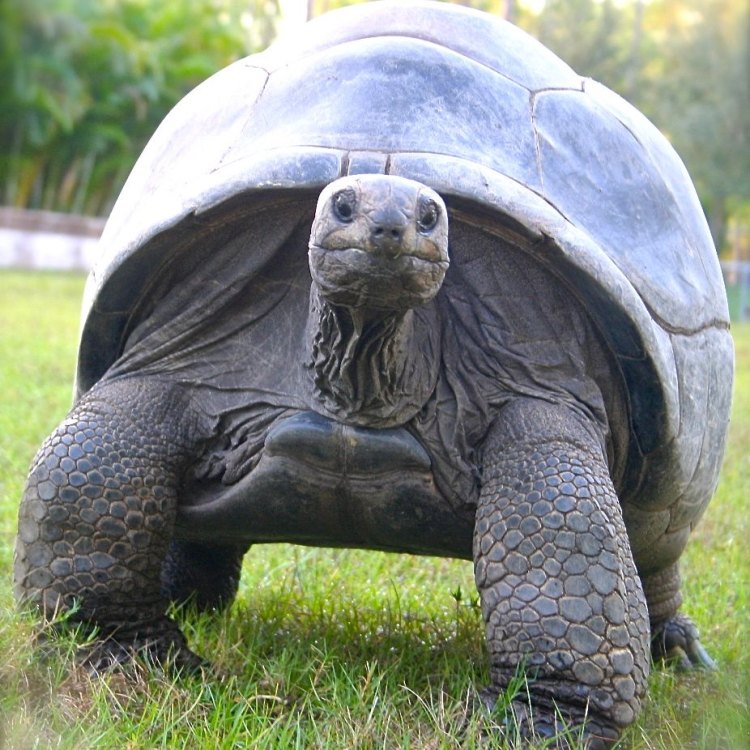
The Amazing World of Tortoises
Disclaimer: The content provided is for informational purposes only. We cannot guarantee the accuracy of the information on this page 100%. All information provided here may change without prior notice.

